NEW YORK—Robert Wilson pries off the metal lid of what looks like a can of paint.
“The ink is really thick, almost like honey,” he says, spooning out a small dollop of it before spreading it over the large metal disk of a late 19th century printing press, and starting it up by spinning the wheel and stepping down to meet a rising foot pedal shaped like a “G.”
“You have to listen to it,” Wilson said. “You want the ink to sound like, we call it, baby snakes.”
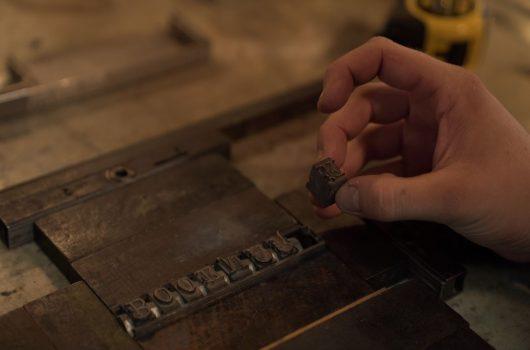
Lo and behold, a few moments later the press has warmed up enough that the ink has distributed evenly; as the parts roll over the ink, it emits a small hiss.
The press itself is a cacophony of overlapping tunes and rhythms once in full flow. The process of working with the machine is sometimes likened to a dance. Though upwards of 2,000 pounds, one is afforded a lot of control with a manual press and it’s really not dangerous at all, Wilson explains.
Wilson is the art director and operations manager of Bowne & Co. Stationers, the print shop attached to the South Street Seaport Museum in Manhattan, New York.
“We’re part custom print shop, part education space,” said Wilson, who the day before gave tours and talks to three separate school groups of eighth graders, and today would be figuring out how to print images from the plates of a historic newspaper archive for a museum client.
New Uses
Yes, letterpress printing is still in demand.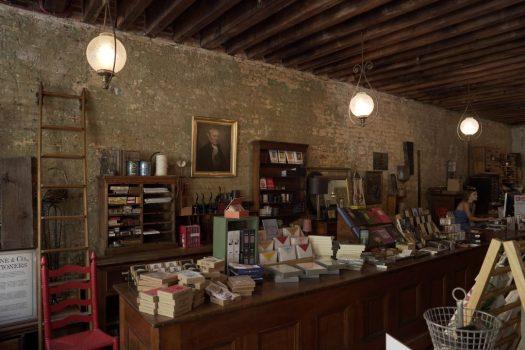
Rather than the receipts and ledgers and other financial jobs the press was known for at its founding, today, customers are looking for something unique and made with a human touch. Often this means wedding invitations, business cards with a story, or a heartfelt thank-you note—the letterpress has gone from printing the advertisements that once littered Water Street to high-end stationery. This method is characterized by the “debossed” effect, as the letters are pressed right into the paper creating an indentation.
Today, Bowne is home to 34 presses, 18 of which are in regular use, largely from the late 19th century.
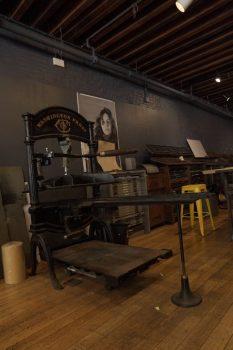
A Little Bit of History
Wilson prefaces this by telling us it’s all a little bit nerdy. Graphic design is a profession where you mind the flicks and corners of each letter and the spaces between them, and design school is where Wilson himself first encountered letterpress printing.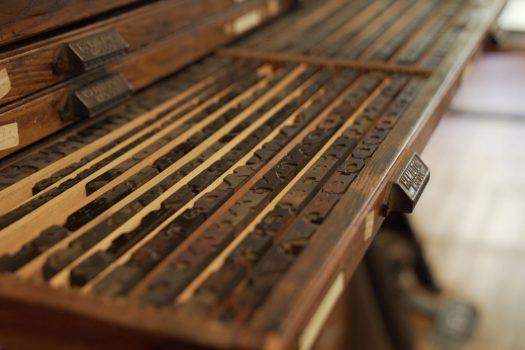
Printing, handmade or not, goes back to antiquity. Then the Industrial Revolution came along, and it wasn’t just that this popularized printing, it changed its purpose in many ways.
“Everything before the Industrial Revolution was focused on, in our world, the production of books,” Wilson said. From the typefaces to the setting of the words, it was about, “How do I make reading more pleasurable and more beautiful?”
“Then the Industrial Revolution [happened] and now we have to advertise—now type has to be something different. Now I have to be exciting, I have to be expressive,” Wilson said. “That’s on the sides of buildings, and that’s on the packaging of everything you buy, the posters on the subway, and it all means something. It’s all trying to do something really specific.”
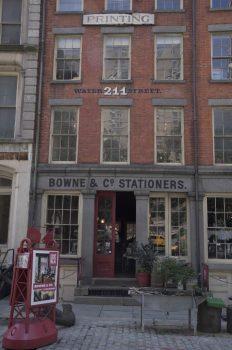
“And that idea, which is really the foundation of graphic design, starts in that 19th century period of, ”How do we move from trying to have people read?“ to now, ”How do we get people to read in a certain way, with a certain feeling?”
A Mindful Physicality
A red-eyed eagle stares out at us, perched atop a letterpress, standing above a serpent-like creature. There’s no reason for this press to be decorated with a caduceus (a winged staff entwined in two serpents) on two sides either, but such was the aesthetic of the Victorian age.“The industrial design at that time was to be as decorative as possible; you couldn’t have a plain-looking press,” Wilson said. There was a thoughtfulness in the consideration of details evident in the decoration of every visible surface. It parallels the thoughtfulness of the letterpress printing process itself.
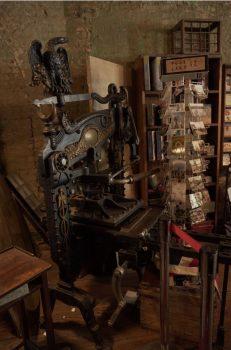
“I love the physicality of setting type,” Wilson said. “I also like the space this place gives us to have that really thoughtful design process.”
Graphic design is something you can do anywhere, but Bowne, set in a museum, is both archive and lab.
“Being in a place where I can do research and historical analysis and bring that together in something that’s a really beautiful product—that’s really fulfilling,” Wilson said.
There’s also the fact that it can exhaust you, working with a press for an entire day. But at the end of it, you have a stack of 1,000 posters to show for it, and there’s something satisfying about the tangibility of the work.
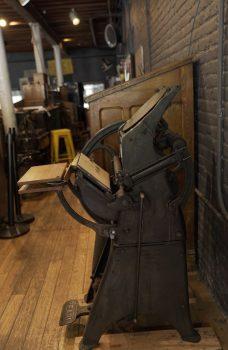
“I think the kind of flexibility and focus of hand making that goes in with a 19th-century press, it almost forces you to do that,” Wilson said. “I think it’s hard to do letterpress printing where you’re not being really mindful.”
“Working with historic equipment just puts you in that space naturally,” Wilson said. “I don’t think it means if you’re using modern equipment you can’t do that, it might just be a little bit harder for you to put yourself in the headspace.”
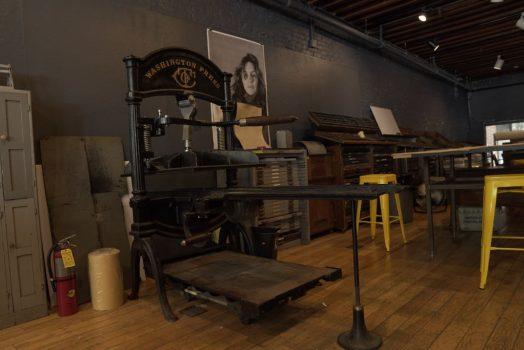
That sort of mindfulness is exactly what people come to Bowne for.
“We want to do everything in our power to make the most well-crafted thing, right, but greater than that is we want to give [people] something they feel invested in,” Wilson said.
Many people walk through Bowne’s doors wanting something that’s not just unique, but comes with a story.
“A lot of people want to know where stuff came from, and we can drill down as far as you really want to with that,” Wilson said. “If you want to know the name of the person who ran the mill that made your paper, we can find that out. If you want to know exactly what foundry or type was cast in, there are ways in which we can do that.”
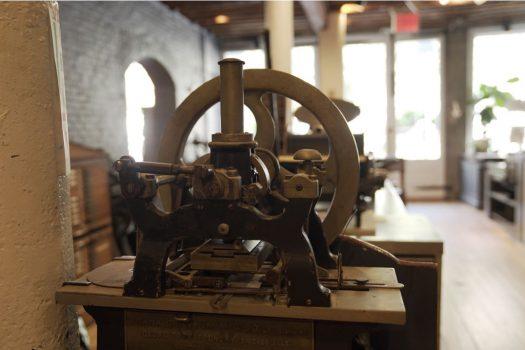






Friends Read Free